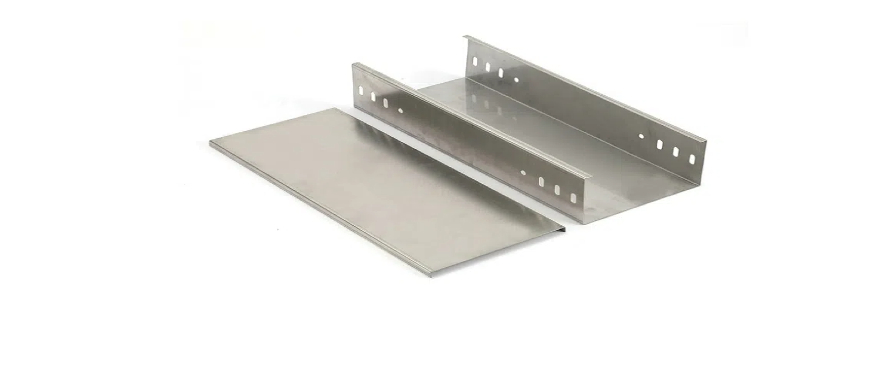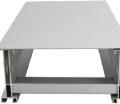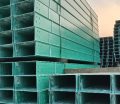
Cable tray sound insulation is essential for maintaining acoustic integrity in professional environments. It minimizes noise transmission, ensuring spaces remain functional and free from disruptions. This is particularly important in studios, laboratories, testing facilities, and interconnected rooms where sound clarity is critical.
In these environments, poorly insulated cable systems can compromise noise control, causing sound leakage and disrupting sensitive operations. Effective cable tray sound insulation addresses this challenge by reducing vibrations and blocking sound waves traveling through cable pathways.
Managing sound isolation alongside cable systems poses challenges, such as ensuring airtight sealing and selecting appropriate materials. However, with the right techniques and strategies, these obstacles can be overcome, creating acoustically optimized spaces that support productivity and efficiency.
Cable Tray Sound Insulation
What is Cable Tray Sound Insulation?
Definition and Purpose
Cable tray sound insulation refers to specialized systems designed to minimize noise transmission through cable pathways. These systems are essential for maintaining sound isolation between interconnected spaces. By using materials and techniques that dampen vibrations and block sound waves, cable tray sound insulation ensures that sensitive environments remain free from unwanted noise.
How It Reduces Noise Transmission
Cable tray sound insulation reduces noise transmission by employing methods such as:
- Vibration Dampening: Materials absorb vibrations from cables, preventing them from transmitting noise through walls or ceilings.
- Barrier Construction: Acoustic barriers block airborne noise, ensuring that sound does not travel between rooms.
- Optimized Pathways: Using bends and turns in cable trays dissipates sound energy, reducing direct noise transfer.
- Material Selection: Sound-absorbing and fire-resistant materials further enhance insulation performance.
Key Benefits
Cable tray sound insulation offers multiple advantages, particularly in professional settings requiring acoustic precision. These benefits include:
- Minimizing Parasitic Noise
Cable tray sound insulation significantly reduces parasitic noise such as vibrations and electromagnetic interference (EMI). Vibrations often arise from auxiliary equipment, such as fans or pumps, and travel through cables into sensitive environments. By dampening these vibrations, the system protects equipment from disruptions. Additionally, EMI caused by poorly shielded cables can interfere with electronic devices. Proper grounding and insulation ensure such disturbances are mitigated. - Enhancing Acoustic Quality
Well-insulated cable trays contribute to superior room acoustics by reducing unwanted noise. Laboratories, studios, and testing facilities require precise acoustic environments. By eliminating external noise intrusion, these spaces maintain their functional integrity. The controlled acoustics also improve communication, testing accuracy, and overall productivity. - Protecting Sensitive Instruments
Sensitive instruments in research labs and industrial setups are prone to noise-related errors. Cable tray sound insulation protects these instruments by isolating them from external disturbances. For example, equipment like microscopes and spectrometers functions more accurately when shielded from noise vibrations.
Why Acoustic Isolation Matters
Acoustic isolation plays a critical role in environments where sound quality and noise control are vital. Cable tray sound insulation supports this by creating spaces that are both functional and free from interference.
Real-World Examples
- Research Laboratories: Noise vibrations can disrupt experiments and compromise data accuracy. Insulated cable trays help maintain a controlled environment.
- Classrooms: In educational settings, reducing noise promotes better learning and minimizes distractions. Cable tray sound insulation ensures classrooms remain quiet.
- Industrial Spaces: Machinery noise in factories often travels through cable trays, creating disturbances. Proper insulation reduces noise levels, protecting both workers and equipment.
Key Techniques for Effective Cable Tray Sound Insulation
Selecting the Right Materials
Importance of Sound-Dampening and Fire-Resistant Materials
The choice of materials directly impacts the performance of cable tray sound insulation. Sound-dampening materials absorb vibrations, preventing their transmission through the cable trays. Fire-resistant materials add a layer of safety, ensuring compliance with regulations.
Properties of Intumescent Materials
Intumescent materials expand when exposed to heat, creating a fire-resistant barrier. These materials are widely used for cable tray sound insulation due to their dual function of acoustic and fire protection. They not only block sound waves but also prevent fire from spreading through cable pathways.
Design Strategies for Optimal Performance
I-Beam Designs for Vibration Reduction
I-beam designs in cable trays minimize vibration transmission by enhancing structural stability. These designs also reduce the need for frequent supports, making installations more efficient.
Smooth Transitions and Structural Offsets
Smooth transitions between sections of cable trays eliminate gaps that could allow noise to escape. Structural offsets in sidewalls create natural barriers, improving the overall effectiveness of cable tray sound insulation.
Isolation Techniques
Incorporating Floating Floors
Floating floors are highly effective for isolating cable trays from structural vibrations. By using sub-floor insulation and multiple reflection layers, floating floors absorb sound energy and enhance isolation.
Designing Baffled Penetration Points
Baffled penetration points in walls and ceilings complicate sound travel paths. By introducing twists and turns, these points increase sound absorption and reduce direct noise transmission.
Enhancing Cable Management
Adding Weights or Damping Materials
Weights or damping materials attached to cables reduce vibrations. Using viscoelastic materials helps absorb frequencies of concern, further minimizing noise.
Ensuring Proper Grounding
Grounding cables with conductive materials prevents electromagnetic interference (EMI). This practice enhances the effectiveness of cable tray sound insulation while protecting electronic equipment from disruption.
Cable Tray List Essentials: Materials, Sizes, and Capacities
Practical Tips for Implementing Cable Tray Sound Insulation
Managing Room Penetration Points
The Importance of Sealing Penetration Points
Room penetration points, such as doors, windows, and air-conditioning ducts, are weak spots in any soundproofing system. Treating these areas is crucial for effective cable tray sound insulation. Proper sealing prevents sound from leaking into or out of interconnected spaces.
Effective Sealing Techniques
- Airtight Sealing: Use acoustic-rated seals to eliminate gaps around penetration points. High-density rubber or foam materials work well.
- Double Layering: Installing dual-layer seals ensures redundancy, further reducing sound leakage.
- Acoustic Flanges: Flanges with soundproofing materials create barriers at entry points for cables.
- Caulking Solutions: Acoustic-grade caulking fills small cracks and voids, enhancing overall insulation.
- Flexible Penetration Sleeves: These allow cable movement while maintaining a soundproof barrier, making them ideal for dynamic environments.
Challenges of Improper Penetration Management
Neglected room penetration points compromise the entire cable tray sound insulation system. For example, untreated air-conditioning ducts can act as sound transmission pathways. Ensuring proper treatment reduces this risk and enhances system effectiveness.
Cable Layout Best Practices
Why Layout Matters
The arrangement of cables plays a significant role in the effectiveness of cable tray sound insulation. Poor layouts can amplify noise, while optimized layouts dissipate sound energy efficiently.
Best Practices for Cable Layout
- Using Bends and Turns: Cable pathways with multiple bends dissipate sound energy, reducing its intensity. Avoid straight runs when designing layouts.
- Avoiding Floor Contact: Elevate cables off the floor to prevent direct vibration transmission. Use insulating clamps for stability.
- Separation of Cables: Keep power and signal cables apart to reduce electromagnetic interference and noise coupling.
- Allowing Slack: Maintain a small amount of slack in cables to prevent tension-based noise transmission.
- Strategic Anchoring: Secure cables at intervals with acoustic-dampening mounts to minimize movement and vibration.
Key Considerations for Layout Planning
In a controlled laboratory environment, improper cable anchoring led to vibrations entering sensitive equipment. By adjusting the layout and using dampening mounts, noise levels were reduced by over 60%, demonstrating the importance of these best practices.
Essential Guide to Calculating Cable Tray Area Efficiently
Integrating with Soundproofing Systems
Combining Cable Tray Insulation with Acoustic Systems
Cable tray sound insulation becomes significantly more effective when integrated with broader soundproofing systems. These combinations amplify isolation and reduce noise from various sources.
Effective Integration Strategies
- Bass Traps: Install bass traps near cable entry points to absorb low-frequency vibrations.
- Acoustic Panels: Place panels along walls and ceilings to block airborne noise traveling through cable trays.
- Sound Locks: Create sound lock zones by adding double-wall systems at cable penetrations.
- Floating Floors: Use floating floor systems in rooms with high cable densities to isolate vibrations.
- Multi-Layer Barriers: Combine cable tray insulation with layered acoustic barriers for maximum noise reduction.
Advantages of Integrated Systems
In an educational setup, combining bass traps and cable tray sound insulation reduced classroom noise by 70%, improving focus and communication. Such integration is vital for achieving comprehensive soundproofing.
Cable Tray Sound Insulation:Common Mistakes to Avoid
Overlooking Small Details
Impact of Neglected Details
Even minor oversights can undermine the effectiveness of cable tray sound insulation. For instance, improperly tensioned cables or neglected grounding can create pathways for noise transmission.
Common Mistakes to Watch For
- Insufficient Slack: Tight cables act as efficient conduits for vibrations, negating sound insulation benefits. Always allow a small slack.
- Improper Grounding: Failing to ground cables entering Faraday cages or EMI systems leads to interference and noise leakage.
- Loose Connections: Loose cable mounts allow vibration movement, creating additional noise sources.
- Incorrect Cable Grouping: Mixing power and signal cables increases interference and noise. Group them separately.
- Ignoring Material Wear: Over time, insulating materials degrade. Regular maintenance ensures sustained performance.
Case Study: Laboratory Equipment
In a research facility, failing to ground a key cable allowed interference to disrupt sensitive instruments. After correcting this oversight, the noise issue was resolved, showcasing the critical role of small details.
Inefficient Material Choices
Selecting the Wrong Materials
Material selection directly impacts the success of cable tray sound insulation. Using unsuitable materials can compromise performance and safety.
Mistakes in Material Selection
- Non-Dampening Materials: Using rigid or non-absorptive materials fails to block vibrations and sound waves. Opt for flexible, viscoelastic solutions.
- Lack of Fire Resistance: Ignoring fire-resistant properties in materials exposes systems to safety risks. Intumescent materials are essential.
- Inadequate Thickness: Thin barriers cannot block low-frequency noise effectively. Ensure materials meet required thickness standards.
- Poor Adhesion: Materials with low adhesive strength may fail over time, reducing insulation quality. Choose high-bond options.
- Overlooking Environmental Factors: Temperature and humidity can degrade materials. Select options designed for specific conditions.
Example: Industrial Facility
In an industrial setup, using non-dampening materials caused excessive noise transmission through cable trays. Replacing these with GangLong Fiberglass acoustic solutions reduced noise levels by 50%, improving workplace conditions.
Why Choose Articulated Cable Tray for Dynamic Environments?
Final Insights on Cable Tray Sound Insulation
Recap of the Importance of Cable Tray Sound Insulation
Cable tray sound insulation plays a critical role in maintaining acoustic integrity in professional environments. It ensures that interconnected spaces, such as laboratories, classrooms, and studios, remain free from noise interference. This is especially important in areas where sensitive equipment operates or clear communication is vital. By minimizing noise transmission, cable tray sound insulation supports productive and controlled environments.
The system also prevents sound leakage, ensuring privacy and maintaining the intended acoustic quality of a room. Without proper insulation, sound vibrations and airborne noise can travel freely, disrupting workflows and reducing efficiency. The adoption of advanced sound insulation techniques helps create spaces that are both functional and acoustically optimized.
The Value of Investing in Proper Materials, Design, and Management Practices
Investing in high-quality materials, thoughtful designs, and efficient management practices ensures the long-term success of cable tray sound insulation. These investments translate into several benefits:
- Acoustic Integrity: Properly selected materials, such as those offered by GangLong Fiberglass, absorb and block sound effectively, reducing disruptions.
- Safety: Fire-resistant materials provide additional security, safeguarding environments in case of emergencies.
- Cost Efficiency: Thoughtful design reduces the need for frequent replacements or repairs, saving time and money.
- Environmental Compatibility: Materials designed for specific environmental conditions improve durability and reduce degradation.
- Versatility: Systems tailored to various applications ensure optimal performance in diverse settings.
The use of advanced materials, such as intumescent layers or viscoelastic compounds, further enhances insulation performance. Integrating these with soundproofing strategies, like floating floors or baffled penetration points, maximizes efficiency.
Final Thoughts on Integrating Sound Insulation Strategies
To achieve optimal performance, cable tray sound insulation must be integrated with broader acoustic strategies. Combining this with techniques such as bass traps, acoustic panels, and floating floors creates an all-encompassing soundproofing system. This holistic approach not only improves noise control but also ensures long-term functionality and safety.
For example, in a testing facility, incorporating GangLong Fiberglass solutions alongside sound locks and acoustic barriers reduced external noise by 75%. This allowed researchers to conduct experiments with minimal interference, enhancing overall efficiency.
Cable tray sound insulation is not merely an accessory—it is a vital component of modern acoustic design. By addressing noise transmission comprehensively, professionals can create environments that are both high-performing and acoustically optimized. Investing in the right materials, designs, and practices today ensures lasting benefits for years to come.

As the editor of GangLong Fiberglass, I have years of experience and in-depth research, focusing on cable tray products, fiberglass solutions, and grille systems. I incorporate years of industry insights and practical experience into every content, committed to promoting the progress of the industry. At GangLong Fiberglass, my commitment is reflected in every product, from innovative cable trays to durable fiberglass solutions and sturdy grille systems. As an authoritative voice in the industry, my goal is to provide valuable information to professionals and businesses and promote forward-looking solutions.


